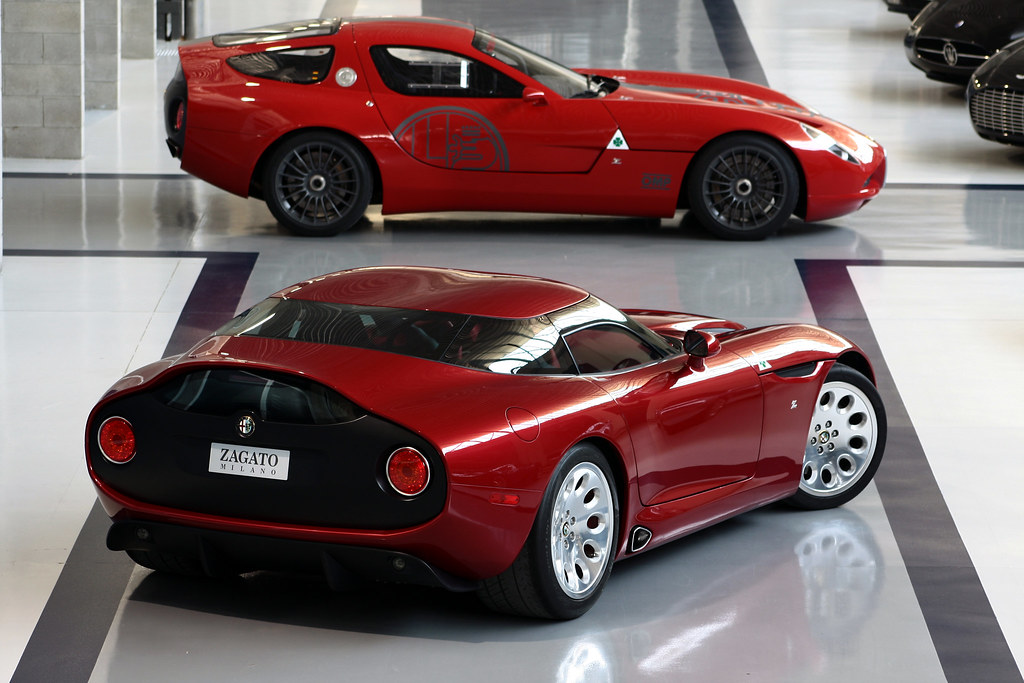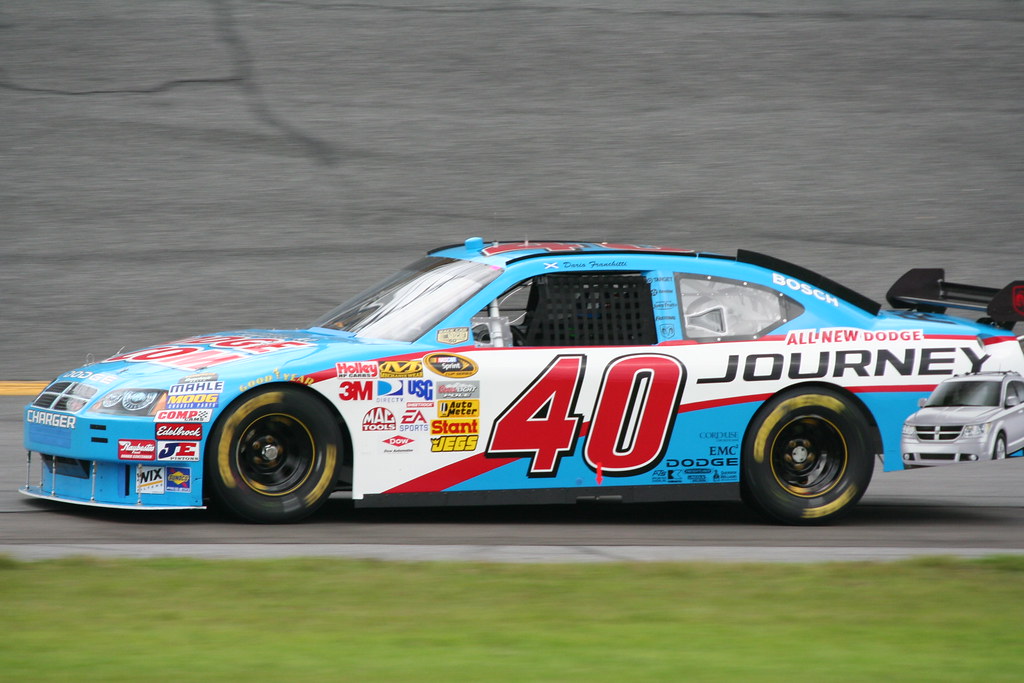
When you hear ‘muscle car,’ your mind probably conjures up images of legendary beasts like the Dodge Charger, Ford Mustang, or Chevrolet Camaro, right? These automotive titans undeniably dominated their era, carving out a permanent place in the pantheon of speed and style. They were the poster cars, the silver screen stars, the machines that roared through our collective consciousness and never quite left. But, my friends, the golden age of muscle cars was far, far richer than just these household names. There’s an entire universe of powerful, stylish machines that rolled off assembly lines during the late ’60s and early ’70s, only to slip into obscurity, overshadowed by their more famous siblings.
We’re here to tell you that these lesser-known machines aren’t just footnotes in automotive history; they are performance hidden gems, brimming with character, unique stories, and genuine brute force. Imagine the thrill of discovering a powerful, stylish vehicle that most people simply overlook, a project car with unique value that offers just as much horsepower and head-turning appeal as the giants. These aren’t just cars; they’re symbols of a bygone era of raw American power, loud engines, bold designs, and pure freedom on four wheels, waiting to be rediscovered and brought back to their former glory.
Restoring one of these forgotten muscle cars isn’t a task for the faint of heart; it takes time, money, and a whole lot of patience. But for the true car enthusiast, it’s more than worth the effort. Every dent, faded stripe, and rusted quarter panel tells a piece of automotive history, begging to be brought back to life. The reward is a unique ride that stands out in any crowd, tells a compelling story, and drives like nothing else on the road today. So, buckle up, because we’re about to dive deep into ten of these underappreciated muscle machines that absolutely deserve another shot at glory, starting with a powerful five.
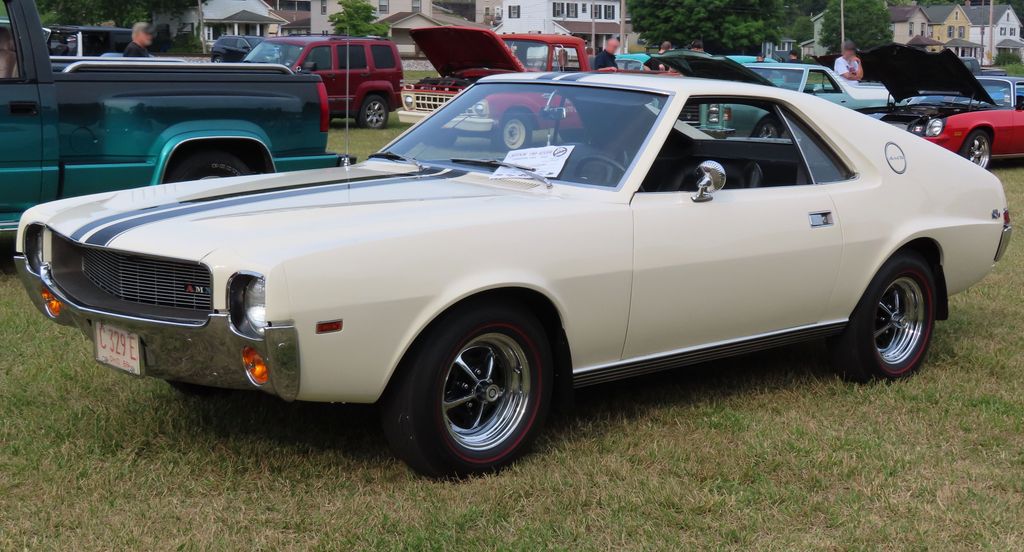
1. **1968 AMC AMX**
Let’s kick things off with a true outlier, the 1968 AMC AMX. American Motors Corporation, bless their audacious hearts, decided they wanted a piece of the muscle car pie, and they went about it in the most wonderfully unconventional way possible. Unlike many of its larger, more cumbersome competitors, the AMX was a two-seater, a bold design choice that immediately made it a unique entry in the roaring muscle car wars. This short-wheelbase wonder packed an aggressive stance and surprising agility on the road, proving that you didn’t need four seats to be seriously quick.
It’s a genuine shame that so many people overlook the AMX today. Perhaps it’s due to AMC’s smaller presence compared to the traditional Big Three automakers, or maybe its distinctiveness just flew over the heads of mainstream collectors. But make no mistake, the performance potential and the distinctive styling of the AMX make it an absolutely excellent candidate for a restoration project. It’s the kind of car that, once revitalized, will spark conversations and turn heads at any car show, simply because it’s so rarely seen and so unmistakably different.
Under the hood, most 1968 AMXs came equipped with a range of powerful V8 options: a 290, 343, or the formidable 390 cubic-inch engine. These powerplants delivered strong performance numbers for their time. In fact, the 390 version could rip from 0 to 60 mph in under 7 seconds, a figure that remains solid even by today’s standards. This car was also designed with a lightweight body, which translated directly into better handling characteristics than many of its heavier muscle car rivals. This potent combination of power and balance made the AMX a firm favorite among amateur racers and street racers alike during its heyday.
Sadly, not enough AMXs were produced to keep the model firmly front of mind for modern collectors, contributing to its current underappreciated status. But that only adds to its mystique and appeal for those in the know. Restoring an AMX does involve a bit more detective work than a more common muscle car, especially when you’re hunting for parts. Since AMC eventually folded in the late 1980s, original components and historical documentation can certainly be harder to come by. However, this challenge isn’t a drawback; it’s a badge of honor for restorers who relish the satisfaction of tracking down rare components and bringing a truly unique machine back to life. A fully restored AMX isn’t just a car; it’s a testament to a bold spirit and a piece of automotive history that dared to be different.
Read more about: Faded But Treasured: 8 Exterior Car Colors You’ll Rarely Find in Modern Automobiles Today
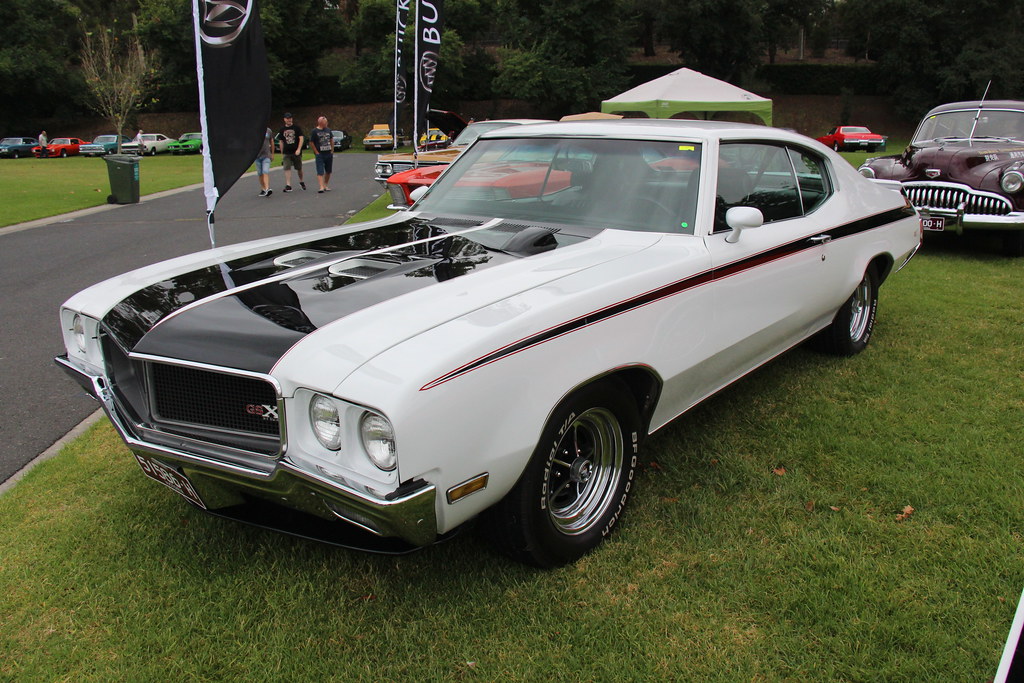
2. **1970 Buick GSX**
Ah, the 1970 Buick GSX – a car that loudly proclaimed Buick’s desire to shed its comfortable cruiser image and prove it could play rough with the best of them. If you thought Buicks were just for Sunday drives, the GSX was here to change your mind, and then some. With its audacious wild paint schemes, aggressive stripe kits, and massive big-block engines, this car announced its presence with an authority that couldn’t be ignored. It was a statement, a challenge, and a genuine muscle machine, unfortunately arriving just as the muscle car era was beginning to face serious restrictions, which arguably prevented it from reaching the iconic status it so richly deserved.
At the very heart of the GSX’s formidable power lay the magnificent 455 cubic-inch V8 engine, a powerplant that unleashed absolutely massive torque figures. This wasn’t merely a straight-line bruiser, though it certainly excelled at that. Buick’s engineers didn’t just bolt on a huge engine; they also upgraded the suspension to deftly handle the colossal power, making the GSX surprisingly competent through corners for a car of its imposing size. And in classic Buick fashion, the interior retained those upscale, luxurious touches, offering a level of comfort that most bare-bones muscle cars of the era simply couldn’t match. This unique blend of refined luxury and raw, untamed performance makes the GSX an incredibly attractive option for anyone seeking the best of both worlds.
Finding a 1970 GSX today is an incredibly rare feat, akin to hitting the classic car jackpot. Only a few hundred were ever made in 1970, and sadly, many have either been lost to time, fallen into disrepair, or been modified beyond recognition. This scarcity, however, only heightens its desirability. Locating one in a restorable condition is a triumph in itself, offering a chance to resurrect a truly special piece of automotive history. The bodywork, with its aggressive front end and that signature high-mounted rear spoiler, looks just as mean and purposeful today as it did when it first stormed the streets in 1970. Rebuilding one demands significant dedication and work, but the payoff is immense: a rare, powerful machine that genuinely stands out from the ever-present crowd of more common muscle cars.
For the muscle car enthusiast who yearns for something a bit more refined, a bit more unique, without having to sacrifice an ounce of raw horsepower, the GSX is a top-tier choice. Its limited production numbers, bold, in-your-face looks, and sheer brute power make it a potent investment, both emotionally and financially. So, if you’re ever fortunate enough to stumble upon one of these sleeping giants, perhaps sitting quietly under a dusty tarp or forgotten in the corner of a barn, don’t hesitate for a moment. Bring it back to life, let it stretch its big-block legs, and allow it to roar again. You won’t regret it.
Read more about: Beyond the Icons: Unearthing 14 Underappreciated Muscle Cars That Deserve Your Attention
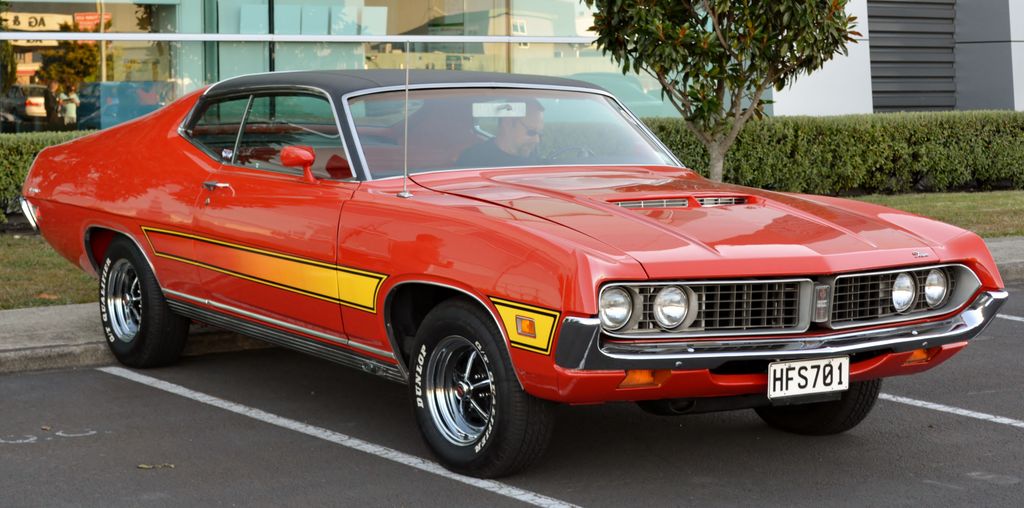
3. **1971 Ford Torino GT**
The 1971 Ford Torino GT was Dearborn’s ambitious answer to the burgeoning popularity of intermediate muscle cars. While the Mustang was busy dominating the pony car market, the Torino GT was expertly aimed at a different kind of enthusiast – one who craved more size, more presence, and unequivocally, more power. This particular 1971 iteration showcased aggressive lines, bold trim packages, and an array of formidable engine options that firmly established it as a serious threat on the street. Yet, despite its undeniable credentials, it often finds itself sadly overlooked, largely thanks to the enormous shadow cast by the legendary Mustang and a lack of consistent long-term branding from Ford.
Don’t let its relative obscurity fool you; the Torino GT was a serious performer. It could be optioned with a range of potent engines, from a respectable 302 small-block all the way up to the thunderous 429 Cobra Jet. The 429 version, in particular, was capable of churning out an astounding 370-plus horsepower, easily making it one of the most powerful cars of its era. Beyond its raw power, the Torino GT also boasted a more aerodynamic body design compared to previous years, featuring a sleek, distinctive front end and a long, flowing fastback roofline. These thoughtful design changes bestowed upon it a more modern, timeless look, a style that still holds up remarkably well even by today’s demanding aesthetic standards.
Embarking on the restoration of a 1971 Torino GT can be an incredibly rewarding journey. Many of these cars were, to put it mildly, ‘used hard and put away wet,’ meaning they’ve weathered a lot of life and often show the battle scars. Consequently, finding an example that hasn’t been completely consumed by rust or subjected to extensive, questionable modifications can certainly be tricky, but rest assured, they do exist. The aftermarket support for these models is moderate, which is a significant help during a full-scale restoration. Engine parts, various trim pieces, and even some body panels can still be sourced if you know precisely where to look. Once meticulously restored, the Torino GT commands attention not through celebrity status, but through its sheer rarity and undeniably sleek profile.
This is a muscle car that unequivocally deserves far more respect than it typically receives. It’s a robust performer with a bold, distinctive look and the kind of pedigree that true enthusiasts appreciate. For restorers who are actively seeking something truly different, something beyond the usual suspects that crowd every car show, the Torino GT is an absolutely perfect fit. Its underdog status only makes it all the more appealing, a true diamond in the rough. And once it’s lovingly brought back to life and cruising the open road, it becomes instantly clear why this unsung hero was a favorite for those in the know back in its prime. It’s a statement piece, a conversation starter, and a fantastic performer all rolled into one.
Car Model Information: 2025 Alfa Romeo Stelvio Sprint
Aka: Ford Fairlane (Venezuela)
Name: Ford Torino
Caption: 1970 Ford Torino Cobra SportsRoof
Manufacturer: Ford Motor Company
Production: 1968–1976
Class: Mid-size car,muscle car
Layout: FR layout
Related: Mercury Montego
Assembly: ubl
Predecessor: Ford Fairlane (Americas)
Successor: Ford LTD II
Categories: 1960s cars, 1970s cars, All Wikipedia articles written in American English, All articles with vague or ambiguous time, Articles with short description
Summary: The Ford Torino is an automobile that was produced by Ford for the North American market between 1968 and 1976. It was a competitor in the intermediate market segment and essentially a twin to the Mercury Montego line.
Just as the Ford LTD had been the upscale version of the Ford Galaxie, the Torino was initially an upscale variation of the intermediate-sized Ford Fairlane. In the 1968 and 1969 model years, the intermediate Ford line consisted of lower-trim Fairlanes and its subseries, the upper-trim Torino models. In 1970, Torino became the primary name for Ford’s intermediate, and the Fairlane was now a subseries of the Torino. In 1971, the Fairlane name was dropped altogether, and all Ford intermediates were called Torino.
Most Torinos were conventional cars, and generally the most popular models were the four-door sedans and two-door hardtops. However, Ford produced some high-performance “muscle car” versions of the Torino by fitting them with large powerful engines, such as the 428 cu in (7.0 L) and 429 cu in (7.0 L) “Cobra-Jet” engines. Ford also chose the Torino as the base for its NASCAR entrants, and it has a successful racing heritage.
Get more information about: Ford Torino
Buying a high-performing used car >>>
Brand: Ford Model: Torino GT
Price: $54,000 Mileage: 889 mi.
Read more about: Beware: These Classic Cars Are Not Worth Restoring – An Expert Guide for Enthusiasts

4. **1973 Pontiac Grand Am 455**
When the conversation turns to Pontiac muscle cars, names like GTO, Firebird, and Trans Am invariably leap to mind. Yet, the 1973 Grand Am 455 offered something truly distinct and, in many ways, ahead of its time. This particular model daringly combined raw American performance with European-inspired styling cues, consciously aiming to create a unique sports-luxury hybrid that could still effortlessly lay down rubber. It might not have possessed the same overtly aggressive appearance as its more famous muscle car siblings, but make no mistake, under its refined hood, it packed the very same kind of formidable punch.
The heart of the Grand Am’s serious muscle was its colossal 455 cubic-inch V8, especially when it was paired with a dual exhaust system and a performance axle ratio. While its suspension setup leaned more towards comfort and a smoother ride, it remained surprisingly capable on a winding back road, easily outmaneuvering many full-size cars of its era. Pontiac truly pushed the envelope with design, adding touches like the flexible urethane front nose, which was a revolutionary feature at the time. This innovation gave the car a futuristic appearance and allowed for sleeker styling while meeting emerging crash regulations. Inside, the Grand Am further solidified its upscale feel with deep, contoured bucket seats and a distinctive wraparound dash, elevating the driving experience beyond typical muscle car austerity.
Restoring a 1973 Grand Am presents a fascinating challenge, largely due to its transitional status within automotive history. It was built during a pivotal period when tightening safety and emissions regulations began to reshape the industry. This means it embodies both the vibrant styling of the late muscle car era and some of the earliest elements of the downsized vehicles that were soon to follow. This unique blend, however, isn’t a detriment; in fact, this mix of styles makes it truly stand out in a crowd. Finding original trim and body parts can indeed be tough, but thankfully, engine components are more readily available, thanks to shared powertrains across the GM family. It’s a car often overlooked by collectors, which is a genuine shame, as it represents a significant turning point in muscle car history.
This understated appearance, a blend of refinement and raw power, is precisely what makes the 1973 Grand Am 455 so special now. It’s the kind of car that utterly surprises people when they witness its confident movement or hear the deep, authoritative growl of that big block engine roaring to life. The design elements, especially that flexible urethane front bumper—dubbed the ‘Endura’ nose by Pontiac—deserve immense credit for pushing stylistic boundaries. The flared fenders, sculpted hood, and recessed grille collectively gave the Grand Am a purposeful and unique look that refreshingly departed from what other muscle cars were doing. This individuality provides it with a distinct identity, helping it truly shine in a world of restorations that often stick to predictable formulas.
Inside, the Grand Am was arguably one of the most comfortable muscle cars of its period. It exuded an almost European sensibility with its plush, contoured bucket seats, rich woodgrain trim, and comprehensive instrumentation. This meticulous level of detail makes it an immensely appealing project for anyone who desires a true driver’s car that staunchly refuses to sacrifice comfort for speed. This isn’t a raw, stripped-down machine; it’s the kind of vehicle you can comfortably take on epic weekend drives without feeling utterly rattled by the journey. That exquisite balance of comfort and exhilarating power is precisely what Pontiac aimed for, and when fully restored, the car delivers on both fronts, making it an incredibly rewarding project for those who appreciate overlooked vehicles with real potential.
Car Model Information: 2025 Alfa Romeo Stelvio Sprint
Name: Pontiac Grand Am
Manufacturer: Pontiac (automobile)
Production: 1973–1975,1977–1980,1984–2005
BodyStyle: fastback,notchback,fastback,notchback
Predecessor: Pontiac LeMans,Pontiac Phoenix,Pontiac Tempest#Third generation 1987–1991
Successor: Pontiac G6
Categories: 1980s cars, 1990s cars, 2000s cars, All articles with dead external links, Articles with dead external links from May 2016
Summary: The Pontiac Grand Am is a car model that Pontiac Division of General Motors produced in various years between 1973 and 2005. The first and second generations were RWD mid-size cars built on the LeMans GM A platform. The Grand Am name was reused for a FWD compact car for the third- and fourth-generations. The fifth-generation versions was enlarged to a mid-size car.
The platform began development intended to be the next generation GTO, but the muscle car era was drawing to a close. Pontiac decided to make this model America’s answer to European luxury sports sedans. The Grand Am name was derived from two other Pontiacs; “Grand” signifying Grand Prix luxury, and “Am” for Trans Am performance.
The first generation Grand Am featured innovations that included a deformable urethane nose (an evolution of the “Endura” bumper pioneered on the 1968 GTO) and was one of only three GM cars (Olds Cutlass Salon, Chevy Monte Carlo S) to debut radial-ply tires (RTS – Radial Tuned Suspension) as standard equipment. The intermediate sized Grand Am was canceled in 1980 when it was replaced by the Pontiac 6000.
A compact-sized Grand Am, based on the GM N-platform, was released in 1985, replacing the Pontiac Phoenix. It became Pontiac’s best selling car and was later replaced by the Pontiac G6, so named as it was intended to be the 6th generation of the Grand Am.
All 1973 through 1975 Grand Ams were built in Pontiac, Michigan at Pontiac’s main assembly plant. The 1978-1980 Grand Ams were built in Pontiac, Michigan at Pontiac’s main assembly plant and in Atlanta, Georgia at GMAD Lakewood. All Grand Ams between 1985 and 2005 were built in Lansing, Michigan at the Lansing Car Assembly.
Get more information about: Pontiac Grand Am
Buying a high-performing used car >>>
Brand: Pontiac Model: Grand Am 455
Price: $54,000 Mileage: 889 mi.
Read more about: Legends of Asphalt: The Definitive Guide to the American Muscle Car, from the Iconic Pontiac Firebird to the Enduring Chevy Camaro

5. **1972 Dodge Demon 340**
The 1972 Dodge Demon 340 often finds itself unfairly overlooked, perhaps due to its compact size or the mild controversy surrounding its name, which Dodge eventually changed. But for those in the know, those who truly understand its capabilities, they see it for exactly what it is: a lightweight street fighter that could consistently punch well above its weight class. Based on the venerable Dodge Dart platform, the Demon was everything you wanted in an underdog muscle car: small, surprisingly affordable, and deceptively fast. It was the kind of car that brought genuine performance to the masses without demanding a king’s ransom.
Underneath its somewhat unassuming exterior, the 340-cubic-inch V8 engine was an absolute gem. This high-revving powerplant delivered incredibly sharp throttle response and truly respectable power, especially when expertly paired with the car’s impressively light frame. While it might not have been a full-size muscle car in the traditional sense, it packed more than enough heat to take down much larger, more ostentatious competitors at stoplights and drag strips alike. This was a car built for action, designed to humble the giants with its nimble spirit and potent bite.
Styling-wise, the Demon was simple yet remarkably effective, embodying a no-nonsense approach to performance. Despite the brief controversy its name stirred, it undeniably carved out a unique place in muscle car lore. The dual hood scoops, classic rally wheels, and aggressive badging gave it just the right amount of attitude, signaling its intentions without being overly flashy. The interior, while certainly not luxurious, was practical and pointedly driver-focused. With its comfortable bucket seats and a straightforward gauge cluster, it felt more like a purpose-built sports car than a conventional muscle car, adding immensely to its unique and scrappy charm. It was a machine engineered for the pure joy of driving, not just for show.
Restoring a 1972 Demon offers enthusiasts a golden opportunity to build something that is genuinely fast, incredibly fun, and still refreshingly affordable compared to the stratospheric prices commanded by more well-known Mopar legends. One of the most appealing aspects of restoring a Demon is its inherent simplicity. The 340 engine is relatively straightforward to work on and benefits from solid aftermarket support, meaning parts are generally accessible for maintenance or upgrades. The chassis is uncomplicated, and components are still out there for those willing to do a little digging. Crucially, because these cars haven’t reached the lofty price points of Chargers or Challengers, finding a restorable example isn’t completely out of reach for someone on a tighter budget. This makes it an ideal starting point for a first-time restorer or a seasoned builder seeking a no-nonsense project with a truly rewarding payoff. It’s an accessible entry point to a world of serious muscle.
What truly makes the 1972 Dodge Demon 340 special, beyond its raw specs, is its undeniable personality. It’s scrappy, quick, and bursting with character. It might not win any popularity contests at a car show packed with big-block Chevelles and flashy Mustangs, but it will absolutely hold its own on the street and earn instant respect in conversations with people who genuinely know their muscle. Restoring one isn’t just about bringing an old car back to life; it’s about reviving a vital piece of muscle car culture that was built for pure, unadulterated performance without any of the showboating. It’s the kind of car that brilliantly proves you don’t always need to be the biggest to be the baddest, or the most famous to be the most formidable. It’s a subtle flex, and we love it.
Alright, you’ve buckled up and taken a thrilling ride through the first half of our list, discovering some seriously cool, often-forgotten muscle machines. But hold onto your hats, because we’re not done yet! The muscle car universe is vast and full of unexpected delights, and we’ve got five more automotive treasures that absolutely deserve a spot in the spotlight, proving once again that true greatness sometimes prefers to lurk in the shadows. Get ready to meet the rest of these underappreciated heroes, each with its own incredible story and performance chops that will make you wonder why they aren’t household names.
Car Model Information: 2025 Alfa Romeo Stelvio Sprint
Name: Dodge Dart
Caption: 1966 Dodge Dart GT 2-door hardtop
Manufacturer: Dodge
Production: 1959–1976 (US market)
ModelYears: 1960–1976 (US market)
Class: Full-size
Layout: FR layout
Predecessor: Dodge Coronet#Fourth generation (1957–1959)
Related: Plymouth Valiant,Chrysler Valiant,Dodge Phoenix
Successor: Dodge Aspen,Dodge Diplomat,Talbot Tagora
Categories: 1970s cars, All articles with unsourced statements, Articles with short description, Articles with unsourced statements from December 2023, Articles with unsourced statements from May 2025
Summary: The Dodge Dart is a line of passenger cars produced by Dodge from the 1959 to 1976 model years in North America, with production extended to later years in various other markets.
The production Dodge Dart was introduced as a lower-priced full-size model in 1960 and 1961, but became a mid-size car for one model year for 1962, and was then reduced to a compact for two generations, from 1963 to 1976.
Chrysler had first used ‘Dart’ name plates on two Italian styled show cars, in 1956 and 1957, before it became a Dodge model name. The Dart nameplate was resurrected for a Fiat-derived compact car that was introduced in 2012.
Get more information about: Dodge Dart
Buying a high-performing used car >>>
Brand: Dodge Model: Demon 340
Price: $54,000 Mileage: 889 mi.
Read more about: Beyond the Icons: Unearthing 14 Underappreciated Muscle Cars That Deserve Your Attention
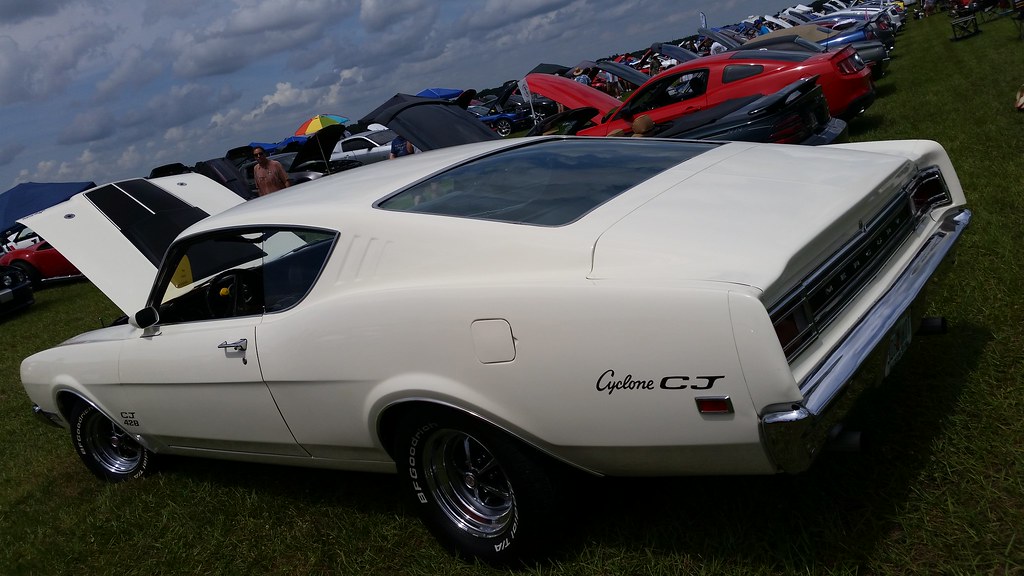
6. **1969 Mercury Cyclone CJ**
Oh, Mercury, you beautiful, slightly confused division of Ford! While many remember the Cyclone, few truly appreciate the sheer, unadulterated grunt of the 1969 Mercury Cyclone CJ. This car is an absolute beast that somehow manages to fly under the radar, a feat almost as impressive as its straight-line speed. Sharing a good chunk of its DNA with the more common Torino and Fairlane, the Cyclone CJ nevertheless carved out its own fierce identity, largely thanks to what was lurking beneath its hood.
And what a magnificent beast that was! The “CJ” proudly stood for Cobra Jet, a designation that meant business. We’re talking about the monstrous 428 cubic-inch V8 engine, a powerplant that delivered serious performance right off the showroom floor. This wasn’t just a pretty face; it was a true performance machine, delivering brutal straight-line speed and enough torque to spin the earth backward. Yet, despite having the heart of a champion, the Cyclone CJ remains a relatively unknown entity, overshadowed by its more famous blue-oval brethren. What a crying shame!
The Cyclone’s design was pure aggression, a bold departure from Mercury’s typically more reserved offerings. It featured a long, low stance, those undeniably cool hidden headlights, and a fastback roofline that gave it a silhouette that practically screamed speed. This car didn’t try to blend into the background; it demanded attention. And with over 400 lb-ft of torque readily available, it could easily light up the rear tires on demand, proving it had substance to match its undeniable style. Plus, it earned a reputation for durability, making it an excellent long-term project for a dedicated restorer.
Now, finding one of these in decent, restorable shape is akin to discovering a unicorn with a supercharger. Production numbers weren’t exactly astronomical, and many of those that were built were driven exactly as they were intended: hard. Rust can be a real party pooper, especially in the rear quarters and floor pans. But here’s the good news for the resourceful among you: many components are interchangeable with other Ford products of the era. This means that while it takes patience and some serious detective work to find the right pieces, the reward of bringing a Cyclone CJ back to life is immense. Once resurrected, it becomes an instant head-turner at any classic car event, simply because most people have no idea what they’re even looking at. That’s true cool, right there.
Read more about: Legends Lost: Revisiting the Classic American Cars of the ’50s and ’60s That Defined an Era and Vanished

7. **1974 Oldsmobile Omega SX**
Alright, let’s be real, the mid-70s were a bit of a grim period for muscle cars. Emissions regulations were tightening their grip, and the once-mighty machines were starting to feel a bit… asthmatic. But amidst this performance drought, the 1974 Oldsmobile Omega SX snuck in, a true sleeper with a surprising amount of potential. Built on the ubiquitous Chevy Nova platform, the Omega shared a lot of mechanical bits with its more famous cousin. Yet, the SX version packed some genuinely worthwhile performance upgrades, elevating it far beyond a simple badge-engineered clone. It’s an easy car to overlook, which, ironically, makes it incredibly appealing today.
Underneath that unassuming exterior, the Omega SX could be optioned with a robust 350 or an even more formidable 455 cubic-inch V8. That’s right, a full-fat 455 in an Omega! This gave it a surprisingly strong foundation for performance. Plus, Oldsmobile engineers didn’t just slap a big engine in it; they also gave it better suspension tuning and improved steering, making it a more composed and capable car on the road compared to its more pedestrian brethren. The body lines were cleaner, more understated than some of the flashier muscle cars of the period, helping it to fly gloriously under the radar. It was built to be driven, not merely stared at from behind velvet ropes.
Restoring an Omega SX requires a healthy dose of vision and imagination, primarily because so few people ever truly grasped what this car could be. Many were, sadly, picked clean for parts or modified beyond recognition, making an unmolested, restorable example a genuinely rare find. But here’s the kicker: that very rarity is precisely what makes it such a worthwhile pursuit. The Nova platform is a dream to work with, parts are surprisingly abundant thanks to that Chevy compatibility, and there’s ample room for upgrades if you’re aiming for a restomod. Whether you want to keep it factory-fresh or unleash a modern monster, the Omega SX provides an incredibly solid and flexible starting point.
What truly elevates the 1974 Oldsmobile Omega SX to hidden gem status is its perfect blend of accessibility and sheer potential. It might not boast the household name recognition of a 4-4-2 or the aggressive, sculpted looks of a Chevelle, but believe me, it’s built from the same glorious GM DNA. For anyone seeking a genuine sleeper, a car that will undoubtedly be the only one of its kind at the local car meet, the Omega SX is an absolutely ideal candidate. Restoring one is more than just bringing an old car back to life; it’s about breathing fresh air into a forgotten chapter of Oldsmobile’s performance story, proving that sometimes, the best muscle cars are indeed the ones nobody ever saw coming.
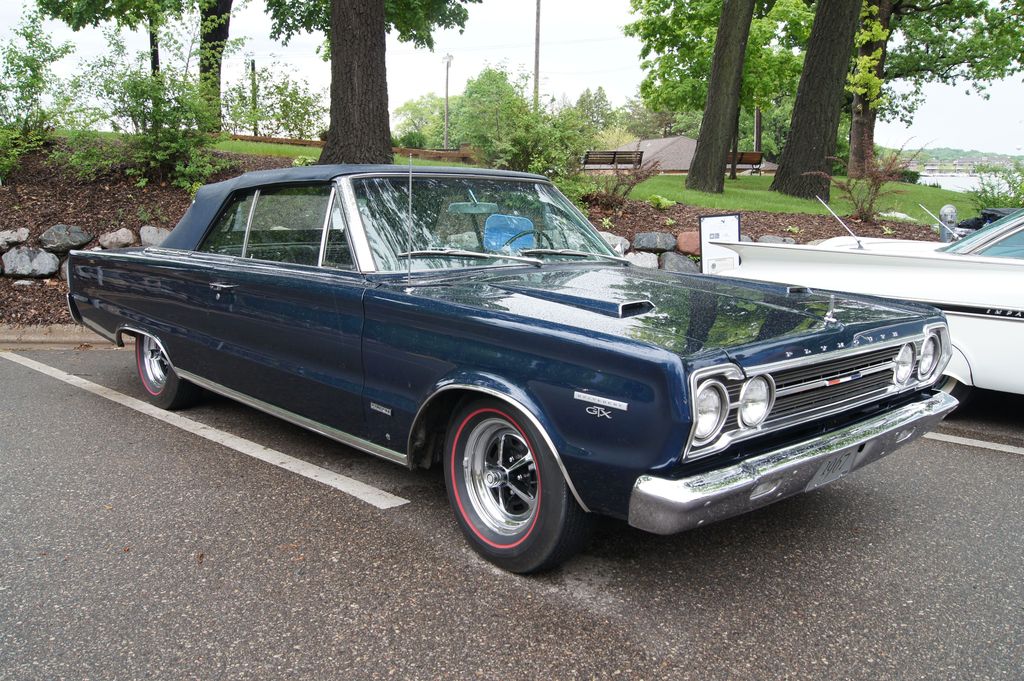
8. **1967 Plymouth GTX**
Ah, the 1967 Plymouth GTX – grandly billed as the “gentleman’s muscle car.” Now, before you scoff at the seemingly contradictory notion, let me tell you, that tag actually nails it. Plymouth had a brilliant vision: to blend sophisticated, refined styling with utterly brutal performance. The result was a machine that could look perfectly at home pulling up to a five-star restaurant and then, moments later, unleash a tire-smoking fury as it left the parking lot. This car was all about having your cake and eating it too, with a side of burnt rubber.
Built upon the sturdy Belvedere platform, the GTX wasn’t just a dressed-up variant; it came with a host of significant upgrades. The undisputed king under the hood was the standard 440 cubic-inch Super Commando V8. This engine alone cranked out a glorious 375 horsepower, and with the right setup, the GTX could confidently run wheel-to-wheel with the most fearsome muscle cars of its era. But its greatness wasn’t just about raw power; it was the meticulous attention to detail that truly set it apart.
The GTX came loaded with high-end trim, meticulously upgraded suspension components, and exquisite interior touches that effortlessly elevated it above many of its stripped-down, bare-bones competitors. From the deeply comfortable bucket seats to the distinctive special badging and those classic rally-style gauges, every element of the car felt a significant step above the ordinary. This thoughtful, comprehensive approach makes it an especially appealing car to restore today. You’re not just building a fast car; you’re resurrecting a superbly engineered performance package that was designed from the outset to be both powerful and possess an undeniable maturity.
Many enthusiasts, sadly, often bypass the GTX in favor of its younger, more boisterous sibling, the Road Runner, which burst onto the scene in 1968 as the ultimate budget muscle car hero. But the GTX offered something fundamentally different: an exquisite balance of brute power and polished refinement. It was never conceived as the cheapest way to go fast; rather, it was engineered to go fast with an unparalleled sense of class. That particular philosophy is a rarity in today’s automotive landscape, and restoring a GTX means preserving a version of the muscle car that wasn’t solely about raw, unbridled aggression. The 1967 model, in particular, holds a special place, marking the inaugural year of the revered GTX nameplate. Many of these silent giants are patiently waiting in backyards, forgotten barns, or dusty storage units, just yearning for someone to truly appreciate their inherent greatness once more. The parts supply is commendably robust, thanks to its shared platform and engine family, and its design remains one of the cleanest, most elegantly proportioned shapes from that golden era. Don’t sleep on the gentleman’s muscle car; it’s a profound statement of power and prestige.
Car Model Information: 1969 Plymouth GTX
Name: Plymouth GTX
Manufacturer: Plymouth (automobile)
Production: 1967–1971,44,178 units
Class: Muscle car
Assembly: Detroit,Michigan
Layout: FR layout
Platform: Chrysler B platform
Caption: 1970 Plymouth GTX
Categories: 1970s cars, All articles needing additional references, Articles needing additional references from February 2010, Articles with short description, Cars discontinued in 1971
Summary: The Plymouth GTX is an automobile manufactured by Chrysler and marketed under its Plymouth division from 1967 to 1971. Introduced as the Belvedere GTX, it was positioned as a mid-sized upscale-trimmed performance muscle car through the 1971 model year.
Get more information about: Plymouth GTX
Buying a high-performing used car >>>
Brand: Plymouth Model: GTX
Price: $63,000 Mileage: 91,764 mi.
Read more about: Legends of Asphalt: The Definitive Guide to the American Muscle Car, from the Iconic Pontiac Firebird to the Enduring Chevy Camaro

9. **1971 Chevrolet Monte Carlo SS 454**
When you ponder Chevrolet muscle cars from the early 1970s, your brain probably zips straight to the legendary Chevelle SS or the iconic Camaro Z/28, right? And for good reason! But let me tell you, there’s a forgotten heavyweight that brought full-size, luxurious comfort to the raw muscle car arena: the 1971 Monte Carlo SS 454. While the Monte Carlo is often unfairly pigeonholed as merely a personal luxury coupe, the SS 454 version was an entirely different animal, far more than just a dazzling array of chrome and plush vinyl. This was a velvet hammer, pure and simple.
Underneath that stately, elongated hood resided a monstrous big-block 454 V8, a powerplant capable of unleashing up to 365 horsepower in its stock configuration. With the right adjustments and a bit of enthusiastic tuning, this engine could deliver absolutely brutal torque, launching the Monte Carlo’s substantial frame with an utterly surprising urgency. It was a machine that defied expectations, capable of both effortless cruising and ferocious acceleration. This dual identity is what makes the Monte Carlo SS 454 truly special.
On the outside, it exuded sophistication: a long, sweeping hood, an elegantly sloped roofline, and subtle, graceful lines that whispered ‘luxury car.’ Inside, it coddled occupants with air conditioning, sumptuously plush seats, and rich woodgrain trim – all the comforts one could desire in 1971. But the moment you pressed the accelerator, it underwent a stunning transformation. The SS option wasn’t just for show; it added heavy-duty suspension components, beefed-up brakes, and performance gearing that made the Monte Carlo far more capable than anyone expected from a luxury coupe. That delightful sleeper quality is precisely what makes it such an incredible candidate for restoration today. It’s a car that confidently defies assumptions, both in its formidable performance and its undeniable, understated presence.
Now, restoring a Monte Carlo SS 454 isn’t exactly a walk in the park. Many of these beauties served as daily drivers, enduring years of hard use or outright neglect. Rust can be a significant adversary, particularly lurking in the rear quarters and trunk area. And finding one with all its original SS trim impeccably intact is an increasingly rare occurrence, as many have been “cloned” or stripped over the decades. However, the fantastic news is that the shared GM B-body platform means a wealth of parts are still available, and there’s robust aftermarket support for drivetrain and interior restoration. The magnificent 454 engine itself is a widely respected and well-supported platform, making it a powerful and remarkably reliable centerpiece for any build. Choosing to restore a 1971 Monte Carlo SS 454 isn’t about picking a car that screams for attention; it’s about choosing one that commands profound respect. It’s not flashy in the stereotypical muscle car sense, but it possesses an undeniable presence and historical gravitas. It represents the glorious twilight of an era when manufacturers were still masterfully blending raw power with sheer comfort, just before regulations regrettably siphoned much of the fun away. Restoring one isn’t just about preserving a unique machine; it’s about reviving a car that truly offers the absolute best of both automotive worlds.
Car Model Information: 2025 Alfa Romeo Stelvio Sprint
Name: Chevrolet Monte Carlo
Manufacturer: Chevrolet
Production: 1969–1987,1994–2007
ModelYears: 1970–1988,1995–2007
Class: Personal luxury car
BodyStyle: coupé
Layout: FR layout
Caption: 2006 Chevrolet Monte Carlo LS
Categories: 1980s cars, 1990s cars, 2000s cars, All Wikipedia articles written in American English, All articles needing additional references
Summary: The Chevrolet Monte Carlo is a two-door coupe that was manufactured and marketed by the Chevrolet division of General Motors. Deriving its name from the city in Monaco, the Monte Carlo was marketed as the first personal luxury car of the Chevrolet brand. Introduced for the 1970 model year, the model line was produced across six generations through the 2007 model year, with a hiatus from 1989 until 1994. The Monte Carlo was a variant of the Pontiac Grand Prix throughout its production.
From 1970 until 1972, the Monte Carlo rode on the unique “A-Special” platform with the Grand Prix, shifting to the standard A-body intermediate chassis from the 1973 through 1977 model years. For 1978, the Monte Carlo line underwent downsizing, but was still considered a midsized coupe. The rear-wheel drive A-body platform of this generation of Monte Carlo was redesignated as the G-body when GM’s front-wheel drive A-body cars were introduced for the 1982 model year. After an abbreviated 1988 model year, the Monte Carlo was replaced by the two-door Chevrolet Lumina.
For the 1995 model year, the Monte Carlo was revived, replacing the two-door Lumina. It shared the front-wheel drive W-platform with the two-door Grand Prix, and was the largest coupe in the Chevrolet lineup. After the 2002 model year, the Grand Prix coupe was discontinued, the Monte Carlo became the largest two-door model produced by an American auto manufacturer.
In response to declining sales of the model line, Chevrolet discontinued the Monte Carlo after the 2007 model year. During much of its production, the Monte Carlo represented the Chevrolet brand in stock car racing. During the 1980s, the Monte Carlo SS was introduced, featuring aerodynamically enhanced styling; as part of its revival, the Monte Carlo again represented Chevrolet in stock car racing from 1995 through its discontinuation.
Get more information about: Chevrolet Monte Carlo
Buying a high-performing used car >>>
Brand: Chevrolet Model: Monte Carlo
Price: $54,000 Mileage: 889 mi.
Read more about: From the Silver Screen to the Garage: Uncovering the Fate of Hollywood’s 14 Most Iconic Movie and TV Cars

10. **1970 Mercury Marauder X-100**
And finally, we arrive at a true enigma, a car so far off most muscle car radars that it might as well be cloaked in invisibility: the 1970 Mercury Marauder X-100. This glorious behemoth is precisely what makes it such an undeniable hidden treasure. Born during a fascinating period when Mercury was grappling with its identity – caught between the plush luxury of Lincoln and the raw performance of Ford – the Marauder X-100 emerged as an utterly unexpected, yet utterly captivating, product of that internal identity crisis. It was large, undeniably bold, and came packing a colossal 429 cubic-inch V8 engine that ensured it could emphatically back up every single one of its muscle car aspirations.
Unlike the more common midsize muscle cars of its epoch, the Marauder was a full-sized leviathan, granting it a commanding, almost regal, road presence. It felt less like a mere muscle coupe and more like a bona fide muscle yacht, effortlessly gliding down the highway with an air of sophisticated menace. Its design was a mesmerizing fusion of raw muscle and stately formality. It boasted a dramatically long hood, a gracefully short deck, and those undeniably cool hidden headlights that bestowed upon it a clean, forward-looking aesthetic. The subtle rear fender skirts and the flowing fastback roofline added just the right dash of sportiness to what was an otherwise imposing and formidable frame. Inside, the X-100 was pure Mercury indulgence: sumptuously plush seats, thick, luxurious carpet, elegant wood-style trim, and every conceivable bell and whistle one could possibly desire in 1970.
Yet, despite all that opulent comfort, this grand tourer could still absolutely rip down a quarter mile in a seriously respectable time. It was a strange, utterly fascinating, and entirely unique blend of refined luxury and raw, untamed power, a combination that no other manufacturer was truly offering at the time. This car, my friends, was charting its own course, and doing so with admirable aplomb.
Finding a Marauder X-100 today is, let’s just say, a rare feat worthy of a seasoned automotive archaeologist. These magnificent beasts were never produced in massive numbers, and their full-size status unfortunately meant that many were tragically scrapped or simply ignored as the performance car market gravitated towards smaller, lighter vehicles. But for those fortunate few who stumble upon one, the restoration possibilities are nothing short of exhilarating. The sheer size of the big-body frame means there’s ample room to work, and the engine bay is cavernous, allowing for either faithful, period-correct rebuilds or some truly epic modern upgrades. The 429 engine is a fundamentally solid and well-regarded platform, and the car’s undeniably unique styling ensures it will stand out in any crowd once lovingly restored. Few people today even remember the Marauder, and fewer still have ever seen one in its full, restored glory. This, my friends, is your chance to change that narrative.
Restoring a 1970 Mercury Marauder X-100 is far more than a simple exercise in performance or aesthetics. It’s about breathing life back into a truly misunderstood car, a machine that boldly dared to be different in an era often defined by conformity. While most manufacturers were timidly downsizing or slavishly chasing fleeting trends, Mercury, in a stroke of genius, created something that refused to fit neatly into any predefined mold. That audacious boldness makes the Marauder an absolutely perfect candidate for a dedicated restoration. It may not be the easiest path, and it certainly won’t be the cheapest, but it is, without a shadow of a doubt, one of the most profoundly rewarding. You don’t just end up with a car; you end up with a muscle car that utterly defies expectations, drives like automotive royalty, and looks like absolutely nothing else on the road. It’s a statement, a legend, and a whole lot of horsepower wrapped in one incredibly distinctive package.
Car Model Information: 2025 Alfa Romeo Stelvio Sprint
Name: Mercury Marauder
Caption: 2003–2004 Mercury Marauder
Manufacturer: Mercury (automobile)
Production: 1963–1965,1969–1970,2002–2004
ModelYears: 1963–1965,1969–1970,2003–2004
Class: Full-size
Layout: FR layout
Categories: 1960s cars, 1970s cars, All articles with dead external links, Articles with dead external links from January 2018, Articles with permanently dead external links
Summary: The Mercury Marauder is an automobile nameplate that was used for three distinct full-size cars produced by the Mercury division of Ford Motor Company. Deriving its name from the most powerful engines available to the Mercury line, the Marauder was marketed as the highest-performance version of the full-size product range.
Introduced as a 19631⁄2 model line for its first production run, the Mercury Marauder was distinguished by its sloped roofline (shared with the Ford Galaxie). The nameplate was a sub-model of the three Mercury model lines (Monterey, Monterey Custom, and S-55).
For the 1966 model year, the Marauder was replaced by the S-55 as a stand-alone model line, making it the Mercury counterpart of the Ford Galaxie 500 XL version.
The Marauder model name returned as a fastback-like version of the Mercury Marquis for the 1969 model year. It was positioned as a personal luxury car between the Mercury Cougar and Continental Mark III. Following the 1970 model year, the Marauder model was discontinued.
The Mercury Marauder nameplate was revived for the 2003 model year as a high-performance variant of the full-size Grand Marquis using the Ford Panther platform. After lower-than-expected sales, the Marauder was discontinued at the end of the 2004 model year. The Mercury Marauder became the last rear-wheel drive sedan introduced by Ford Motor Company in North America.
Get more information about: Mercury Marauder
Buying a high-performing used car >>>
Brand: Mercury Model: Marauder X-100
Price: $54,000 Mileage: 889 mi.
There you have it, fellow enthusiasts – ten incredible, often-overlooked muscle machines that embody the raw power, audacious style, and undeniable character of a truly golden era. These aren’t just cars; they are forgotten legends, each with a unique story and an intoxicating blend of performance and personality that stands apart from the usual suspects. While the Mustangs, Chargers, and Camaros will forever hold their rightful place in the pantheon of speed, it’s these hidden gems, these underdogs, that truly add depth and excitement to the muscle car narrative. So, next time you’re hunting for a project, or simply dreaming of your next ride, remember these glorious machines. Take a chance on the road less traveled, because sometimes, the most rewarding discoveries are found precisely where others aren’t looking. Happy hunting, and may your garages be filled with roaring, unique beauty!


